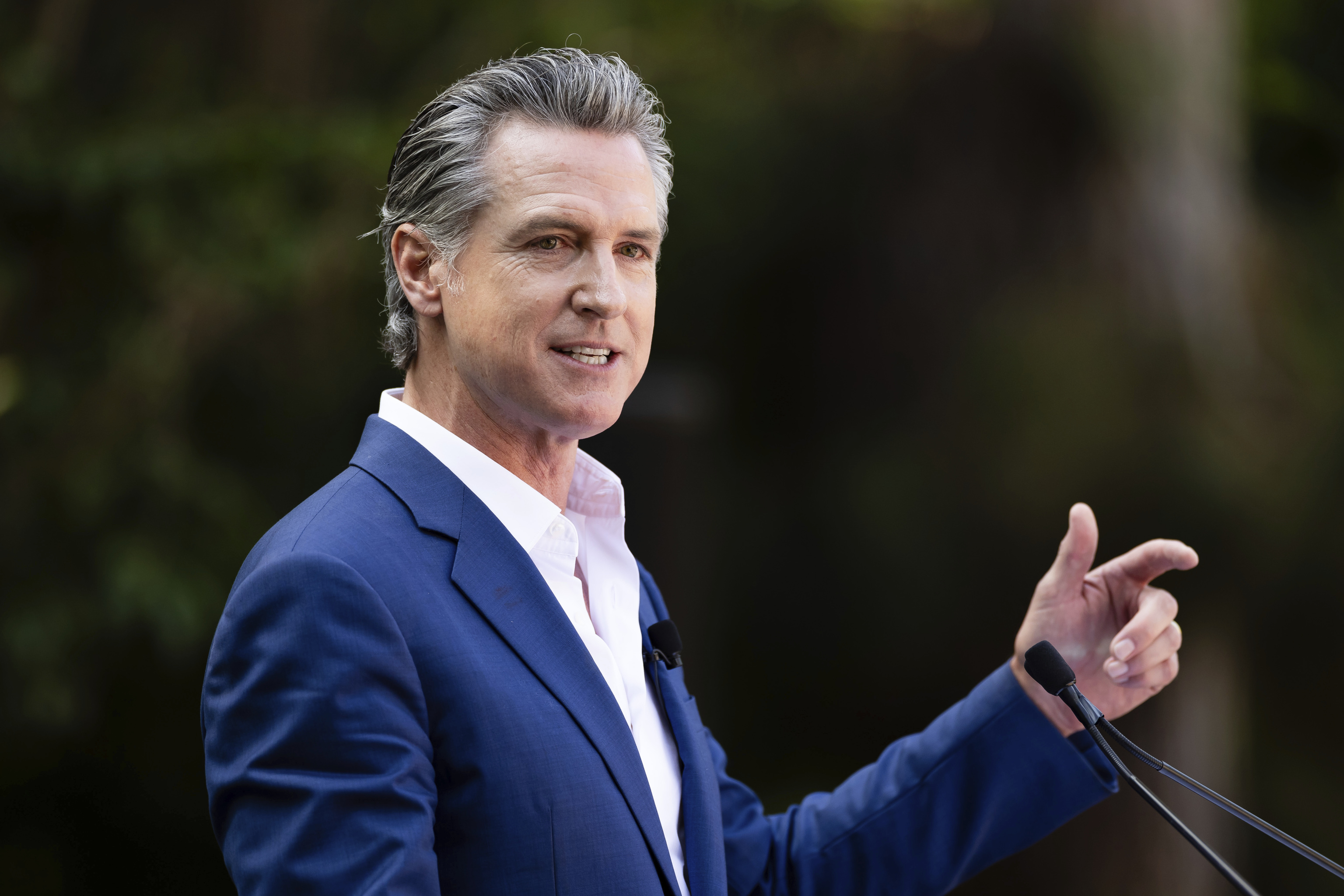California and South Carolina could become the next states to limit cellphone use in schools, with state officials taking up the issue Tuesday.
California Gov. Gavin Newsom is sending letters to school districts, urging them to restrict students' use of smartphones on campus. South Carolina's State Board of Education took up guidelines to tell local districts to ban cellphone use during class time, but postponed a final vote until next month to take more time to craft the proposal.
The efforts mark a broader push by officials in Utah, Florida, Louisiana and elsewhere to try to limit cellphone use in schools in order to reduce distractions in the classroom — and address the impacts of social media on the mental health of children and teens.
But progress can be challenging. Cellphone bans are already in place at many schools, but they aren't always enforced.
Districts should "act now" to help students focus at school by restricting their smartphone use, Newsom said in the letter. He also cited risks to the well-being of young people, a subject which garnered renewed attention in June after U.S. Surgeon General Vivek Murthy called on Congress to require warning labels on social media platforms.
"Every classroom should be a place of focus, learning, and growth," the Democrat said in his letter. "Working together, educators, administrators, and parents can create an environment where students are fully engaged in their education, free from the distractions on the phones and pressures of social media."
Newsom said earlier this summer that he was planning to address student smartphone use, and his letter says he is working on it with the state Legislature. Tuesday's announcement is not a mandate but nudges districts to act.
Newsom signed a law in 2019 granting districts the authority to regulate student smartphone access during school hours.
The debate over banning cellphones in schools to improve academic outcomes is not new. But officials often resort to bans as a solution rather than find ways to integrate digital devices as tools for learning, said Antero Garcia, a professor at Stanford University's Graduate School of Education.
"What I'm struck by is society's inability to kind of move forward and find other kinds of solutions other than perpetually going back to this 'Should we ban devices?' conversation as the primary solution to something that hasn't worked," Garcia said.
"Suggesting curtailing cellphone use in schools is a great thing to say," he added. "What that means for the middle school teacher come next week when many schools start is a very different picture."
Some schools and districts in California have already taken action. The Santa Barbara Unified and Los Angeles Unified school districts passed bans on student cellphone use in recent years.
But some school board advocates say the state should not go further by passing a blanket ban on cellphone use. That decision should be left up to districts, said Troy Flint, spokesperson for the California School Boards Association.
"Cellphone usage and social media usage on campus is certainly a serious issue and one that deserves a close examination," Flint said. "But those decisions are very specific to certain schools and certain communities, and they need to be made at a local level."
There is no cure-all for protecting students from the risks posed by smartphones, but the state is "opening up a conversation" on how districts could act, said David Goldberg, president of the California Teachers Association.
"It makes sense for us as adults to be looking and trying to take care of students and allow them to have safe spaces to learn," he said. "How we do it is also very important — that we make sure that we bring students into these conversations and educators into these conversations."
South Carolina lawmakers this summer passed a temporarily one-year rule in the state budget requiring schools to ban student cellphone use or lose state funding. The schools have until the start of 2025 to get their specific rules and punishments for breaking them in place.
Education officials rushed to get the proposal together so districts would have time to tailor their own rules around the state guidelines.
But state board Chairman David O'Shields said Tuesday there was no need to rush and give the districts "runny eggs" when a little more time could be spent working on the rules, getting more input from teachers, parents and administrators.
"Let's get these eggs right. I want a good omelet," O'Shields said.
O'Shields was especially convinced by Jennifer Rainville of the South Carolina Appleseed Legal Justice Center who pointed out more than 100,000 students were suspended in a recent school year and asked that the rules be specific as possible in pointing districts away from that as a punishment.
"The last thing we need is to come up with cellphone polices that are an easy way out for students that might take a suspended day when they need to be in the classroom," O'Shields said.
There are questions whether to ban cellphones during bus rides or field trips or only during class time.
"Let's give back to kids a distraction-free childhood," state Education Department Deputy Superintendent Matthew Ferguson said.
A brief survey of South Carolina teachers in May showed 92% supported limiting cellphone access in classrooms and 55% wanted a total ban. The survey from Education Superintendent Ellen Weaver also found 83% of teachers think cellphones are a daily distraction to learning, the Education Department wrote in a memo to the board.
